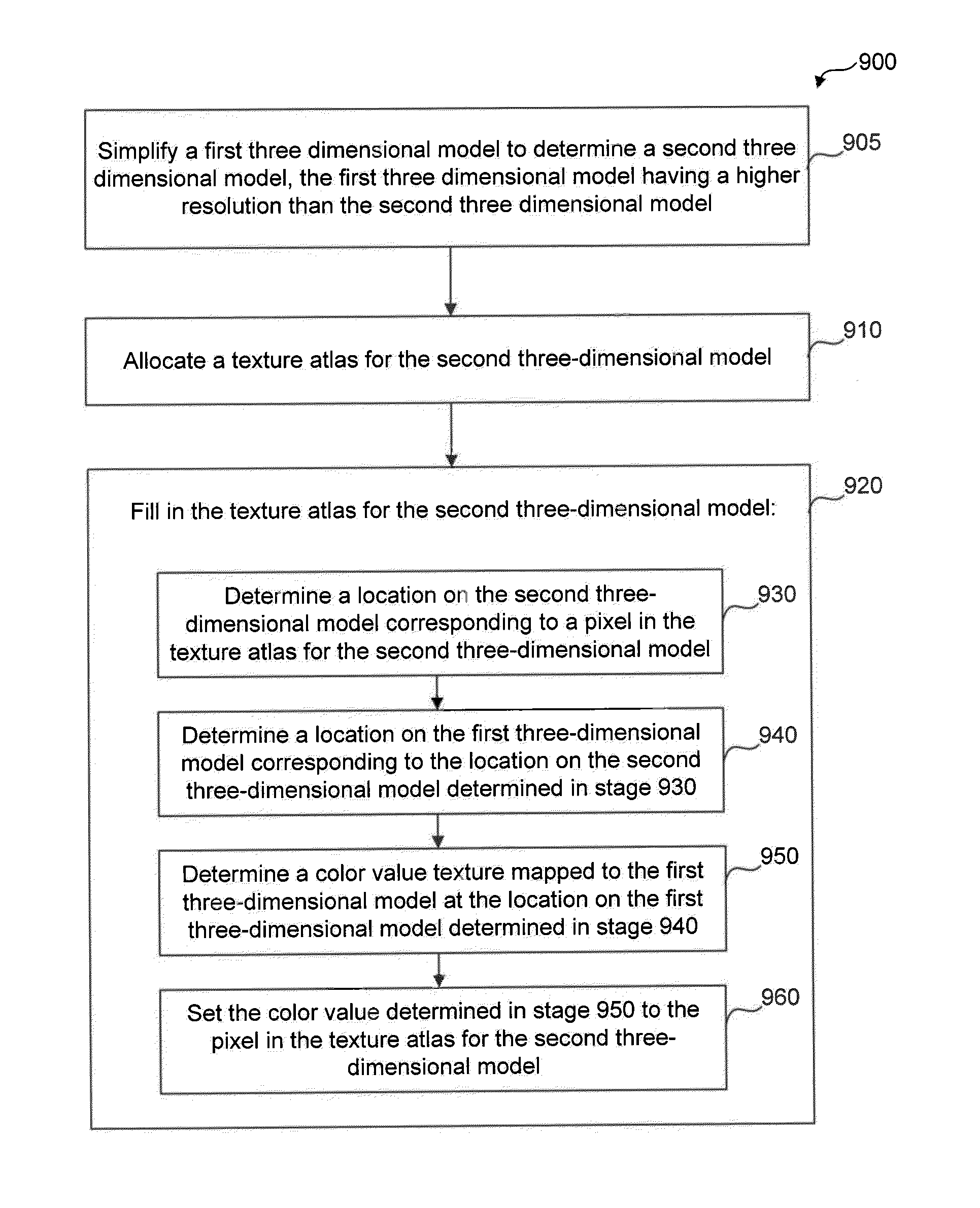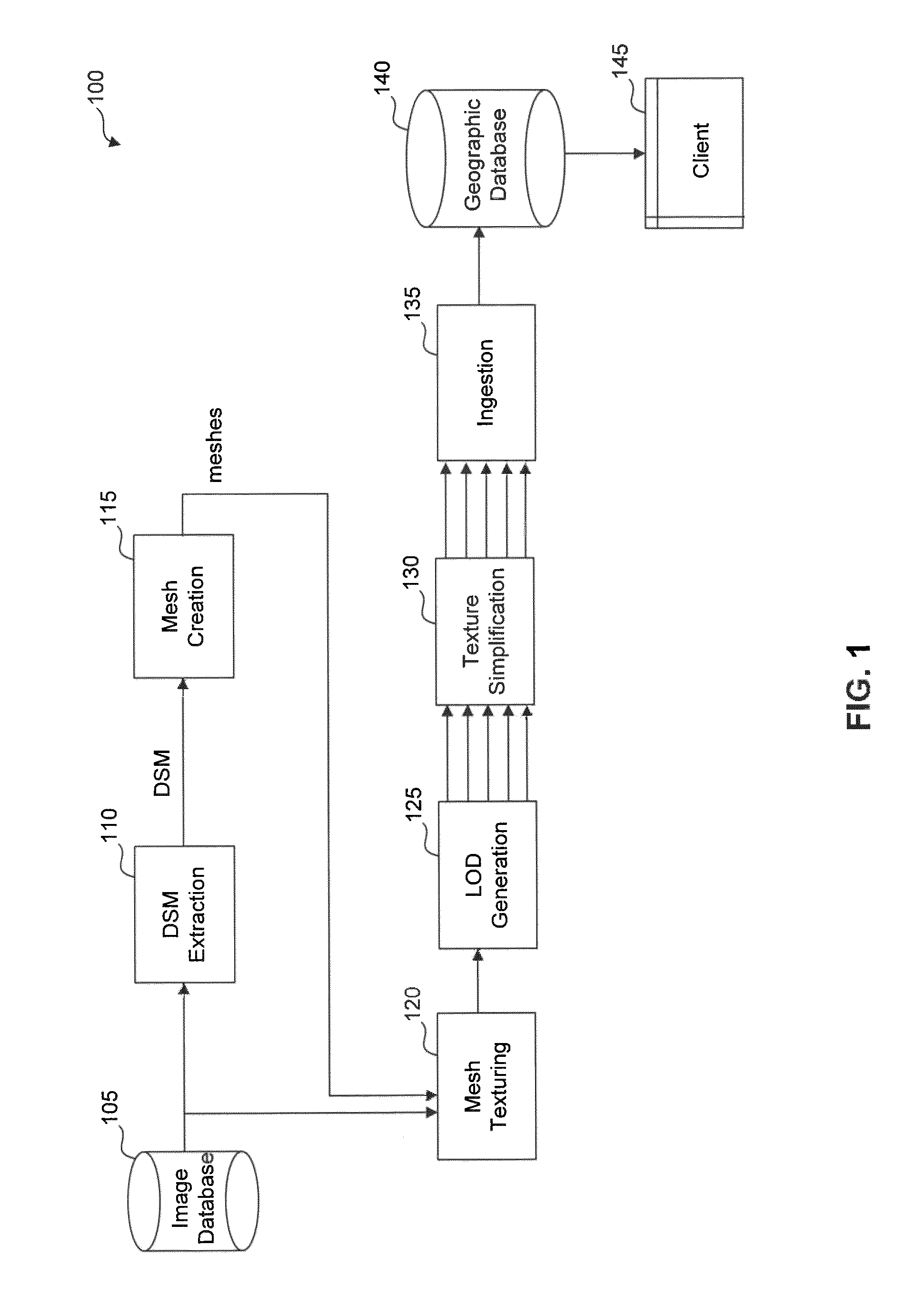Generating reduced resolution textured model from higher resolution model
a textured model and higher resolution technology, applied in the field of display three-dimensional models, can solve the problems of inefficient space texturing of coarse resolution models, inability to apply the texture used for the higher resolution model to the lower resolution model, and increase or decrease the complexity etc., to achieve the effect of simplifying the texture of a three-dimensional model and the lower resolution version
- Summary
- Abstract
- Description
- Claims
- Application Information
AI Technical Summary
Benefits of technology
Problems solved by technology
Method used
Image
Examples
Embodiment Construction
[0023]I. Overview
[0024]II. Generating a Textured Three-Dimensional Model[0025]A. Data Extraction[0026]B. Mesh Creation[0027]C. Texture and Simplified Models[0028]D. Texture Simplification[0029]E. Render Appropriate Version of the Three-Dimensional Model
[0030]III. Example Texture Simplifying System[0031]A. Model Simplification[0032]B. Texture Simplification
[0033]VI. Example Method
[0034]V. Example Computer Embodiment
I. Overview
[0035]This description generally relates to generating textured meshes at multiple levels of geometry and texture resolution.
[0036]Generating a lower resolution version of a given textured three-dimensional model may be useful. For example, a series of different resolution models may be generated from one source model so that the resolution appropriate for the current viewpoint is rendered on the screen. Displaying the lower resolution model is less computationally expensive than displaying the higher resolution model. Further, it is useful to reduce not only th...
PUM
 Login to View More
Login to View More Abstract
Description
Claims
Application Information
 Login to View More
Login to View More - R&D
- Intellectual Property
- Life Sciences
- Materials
- Tech Scout
- Unparalleled Data Quality
- Higher Quality Content
- 60% Fewer Hallucinations
Browse by: Latest US Patents, China's latest patents, Technical Efficacy Thesaurus, Application Domain, Technology Topic, Popular Technical Reports.
© 2025 PatSnap. All rights reserved.Legal|Privacy policy|Modern Slavery Act Transparency Statement|Sitemap|About US| Contact US: help@patsnap.com



